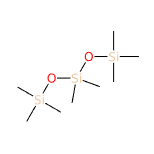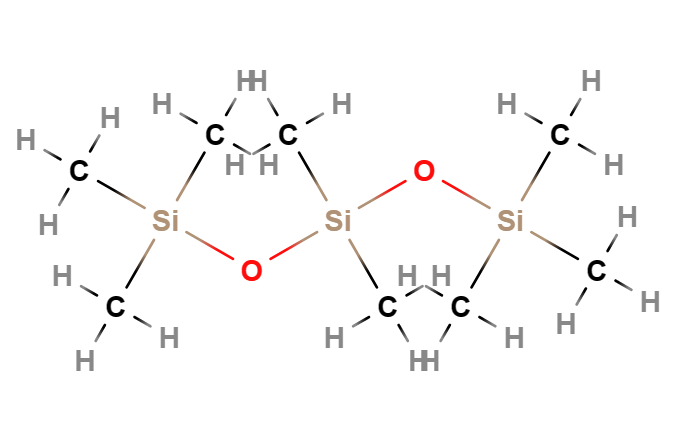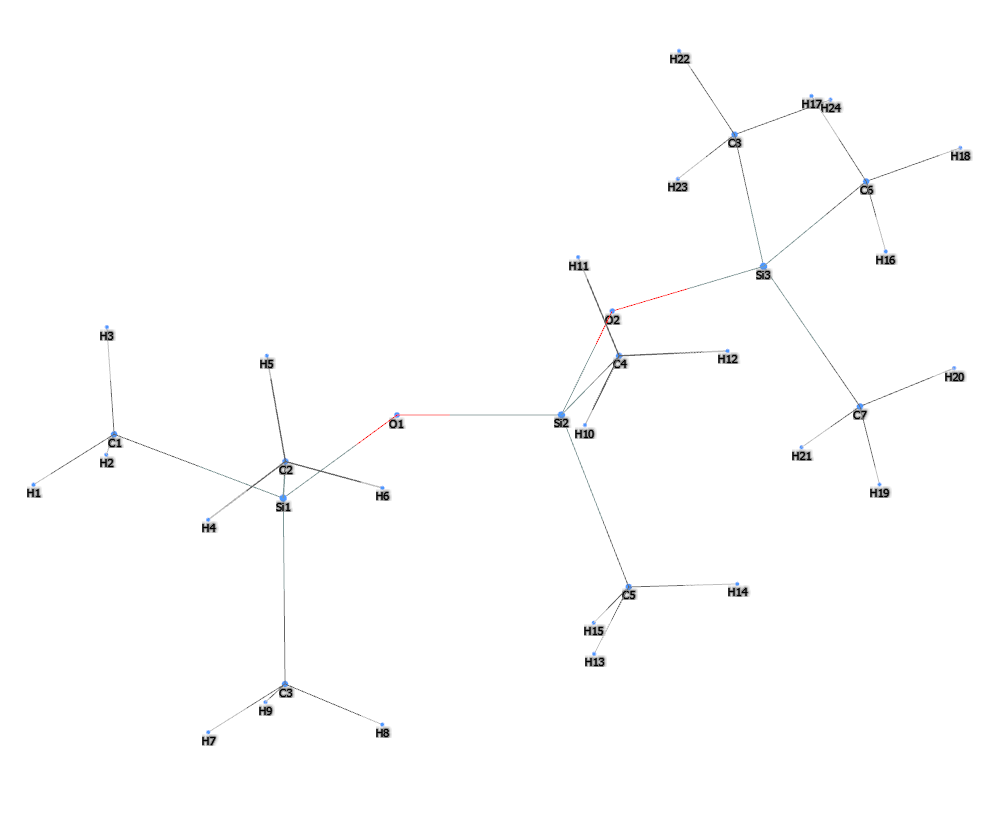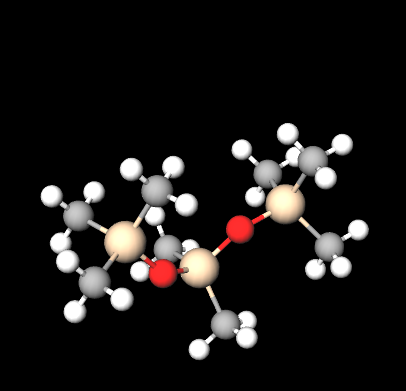| "Descrizione" by Qwerty (3763 pt) | 2023-Apr-26 14:24 |
Review Consensus: 9 Rating: 9 Number of users: 1
| Evaluation | N. Experts | Evaluation | N. Experts |
|---|---|---|---|
| 1 | 6 | ||
| 2 | 7 | ||
| 3 | 8 | ||
| 4 | 9 | ||
| 5 | 10 |
Dimethicone is a mixture of linear siloxane (silicon compound) polymers containing fully methylated repeating units produced by a hydrolysis process from dimethyldichlorosilane and small amounts of trimethylchlorosilane. Production starts with pure silicon, which is obtained at high temperature from quartz sand.
It is also known as Dimethyl polysiloxane or poly(dimethylsiloxane).
It appears as a colourless viscous liquid.

What it is used for and where
Food
An ingredient on the European food additives list as E900 with an anti-foaming function, it is added to frying oils and is a preservative (1).
Safety
The EFSA Panel on Food Additives established an ADI of 17 mg/kg bw/day (2).
Cosmetica
Antifoaming agent. The constituent factors for foam stabilisation are the concentration of nanoparticles and hydrophobicity. Foam, even when used in separation operations such as fractionation or flotation, can cause a decrease in density and a deterioration in quality in cosmetic products. The defoaming agent (non-polar oil, silicone oils, hydrophobic solid particles or mixtures of both) is strongly influenced by viscosity and, to an almost directly proportional extent, concentration. However, defoamers can carry an irreversible source of contamination.
Skin conditioning agent. It is the mainstay of topical skin treatment as it has the function of restoring, increasing or improving skin tolerance to external factors, including melanocyte tolerance. The most important function of the conditioning agent is to prevent skin dehydration, but the subject is rather complex and involves emollients and humectants that can be added in the formulation.
Skin conditioning agent - Emollient. Emollients have the characteristic of enhancing the skin barrier through a source of exogenous lipids that adhere to the skin, improving barrier properties by filling gaps in intercorneocyte clusters to improve hydration while protecting against inflammation. In practice, they have the ability to create a barrier that prevents transepidermal water loss. Emollients are described as degreasing or refreshing additives that improve the lipid content of the upper layers of the skin by preventing degreasing and drying of the skin. The problem with emollients is that many have a strong lipophilic character and are identified as occlusive ingredients; they are oily and fatty materials that remain on the skin surface and reduce transepidermal water loss. In cosmetics, emollients and moisturisers are often considered synonymous with humectants and occlusives.
Skin protectant. It creates a protective barrier on the skin to defend it from harmful substances, irritants, allergens, pathogens that can cause various inflammatory conditions. These products can also improve the natural skin barrier and in most cases more than one is needed to achieve an effective result.
Other uses
Non-corrosive liquid refrigerant.
 |  |
 |  |
- Molecular Formula (CH3)3-Si-[O-Si(CH3)2]n-O-Si(CH3)3
- Molecular Weight 236.53
- CAS 63148-62-9 9006-65-9
- UNII 9G1ZW13R0G 92RU3N3Y1O
- EC Number 613-156-5
References_____________________________________________________________________
(1) Dunford, N., 2003. Deep-fat frying basics for food services: Fryer, oil and frying temperature selection. Oklahoma Cooperative Extension Service.
(2) EFSA Panel on Food Additives and Flavourings (FAF), Younes, M., Aquilina, G., Castle, L., Engel, K.H., Fowler, P., Frutos Fernandez, M.J., Fürst, P., Gürtler, R., Gundert‐Remy, U. and Husøy, T., 2020. Re‐evaluation of dimethyl polysiloxane (E 900) as a food additive. EFSA Journal, 18(5), p.e06107.
Schlie, L.A., Rathge, R.D. and Dunkle, E.A., 1991. High UV (λ≥ 2200 Å), visible, and near infrared (λ≤ 0.8 μm) transmissive liquid coolant for high power microwave (2.45 GHz) plasma tubes. Review of scientific instruments, 62(2), pp.381-391.
| Evaluate |

